About a week before Christmas last year, I went to an antique toy show. Among the vintage slot cars, board games, and toy soldiers was a mint condition Dinky Toys Honest John rocket-launching vehicle. I was overwhelmed with a flood of childhood memories. That toy had been at the top of my wish list in the late 1960s, and it was a boyhood Holy Grail that I sought but never got.
The current $150 price tag (firm) caused me to move on, but the experience was not only nostalgic, but motivating. While my little kid mind thought the Honest John launcher was about the coolest thing imaginable, my adult brain knew rather little about the attention-getting Cold War missile system. The dominoes began to fall, and the result was this article.
Harnessing the Atom
It didn’t take long for the U.S. military to create a tactical nuclear weapon. After the two atomic bomb blasts that ended World War II in August 1945, the U.S. Army had successfully tested a short-range surface-to-surface rocket in June 1951.
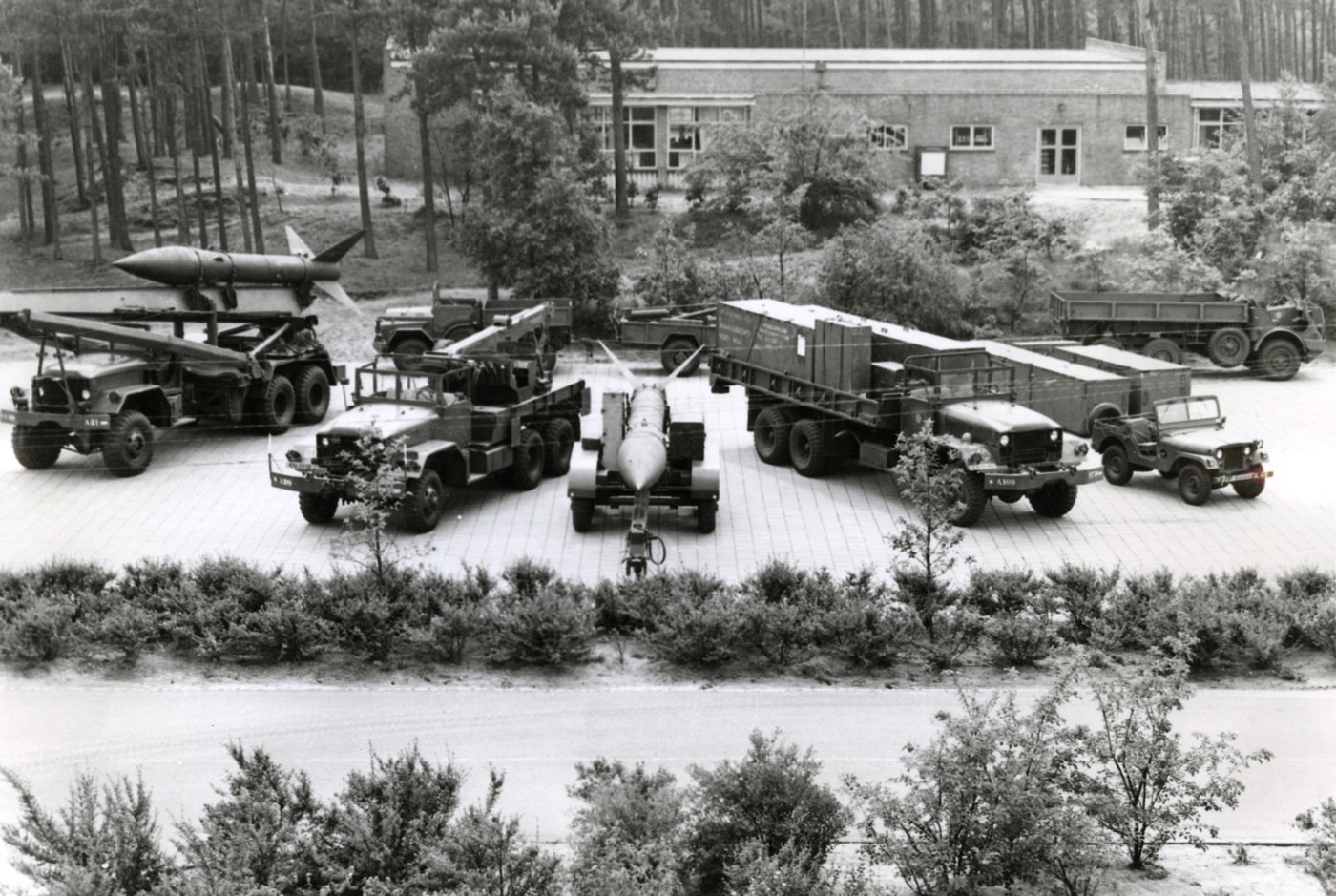
Originally designated the XM31, the nuclear-capable artillery rocket was redesignated “M31” and was in service by September 1953. NATO was only four years old when Honest John was born. American forces based in Europe received the Honest John in early 1954.

Conversely, the MGR-1 Honest John was America’s first nuclear-capable surface-to-surface rocket, and its deployment to Europe made worldwide headlines and drew considerable interest for the weapon system. A 1956 ad for the Douglas Aircraft Company, the designers of the Honest John missile, proclaimed “New missile marches with the infantry.”
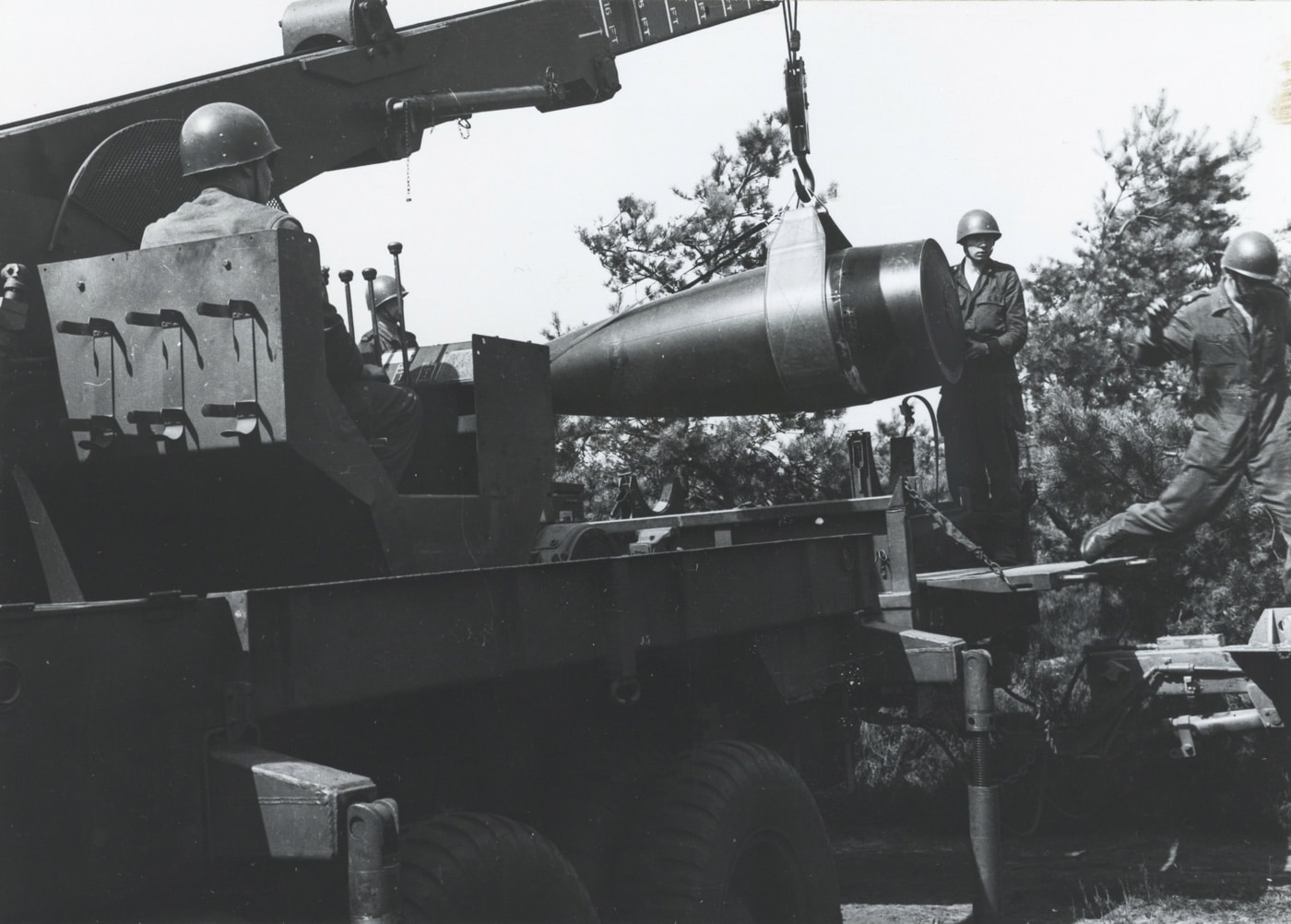
The text goes on to say: “Trucks, tanks, and parachutes give the infantry high-speed mobility that calls for equally mobile support weapons. One such weapon is Honest John, developed by Douglas in cooperation with Army Ordnance. This new missile is a free-flight rocket without a complicated guidance system. It moves quickly into position on a special truck that serves both as transport and launcher. Highly accurate, Honest John can handle either a nuclear warhead or a single explosive round of tremendous power.”
Granted, it is promotional language from the manufacturer, but the statements are mostly true. However, the old expression “Close only counts in horseshoes and hand grenades” also applies to nuclear weapons — so “highly accurate” is debatable unless you are in the blast zone. Far from a modern precision weapon, Honest John was considered accurate enough.
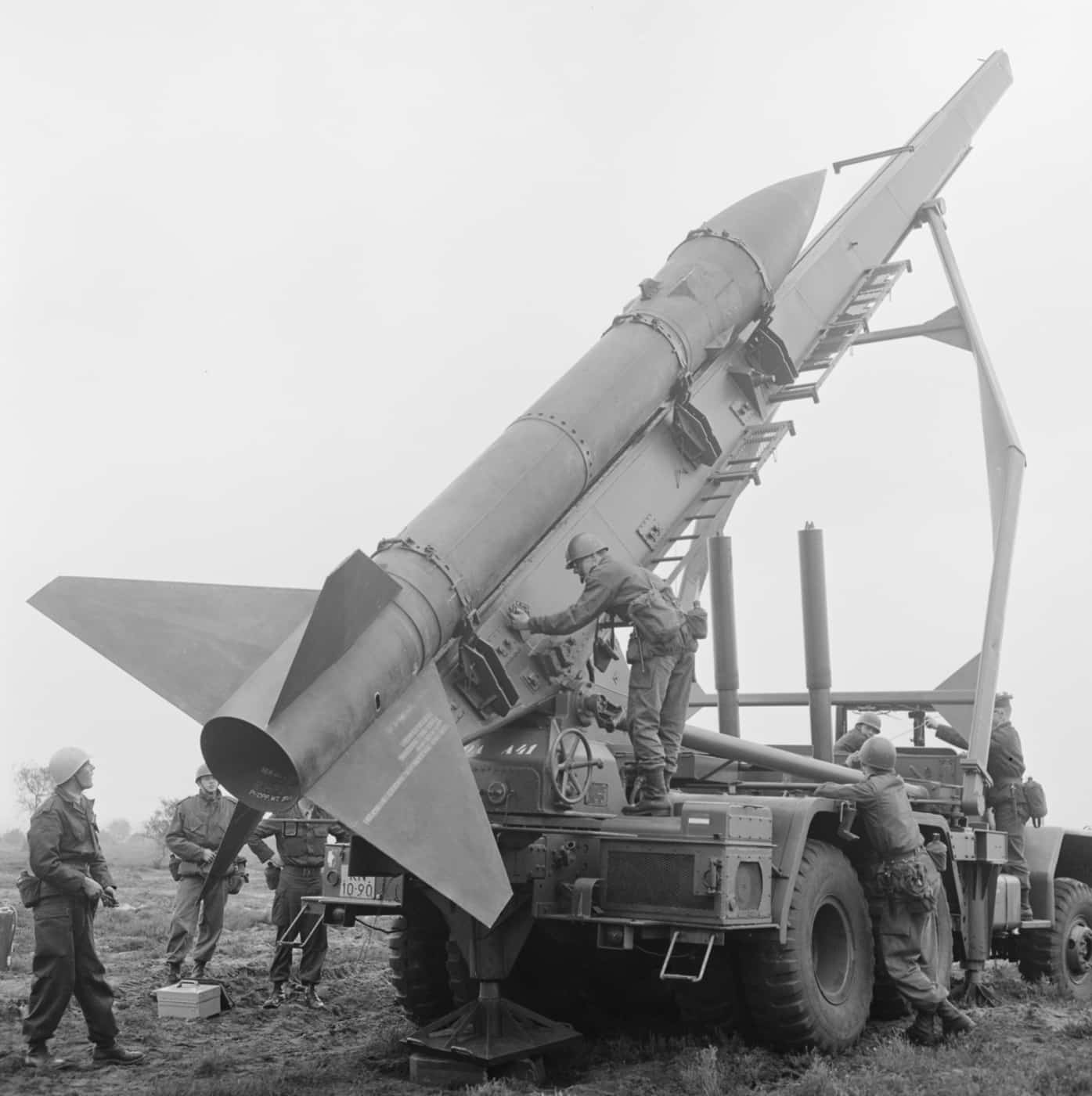
Despite its impressive looks, the Honest John was a simple, unguided artillery rocket. As the 5,800-pound rocket left the elevated ramp of its launcher, four “spin rockets” ignited to fin-stabilize the projectile in flight. The initial M31 offered a range of about 15 miles, armed either with a 20-kiloton nuclear warhead or a conventional 1,500-pound high explosive.
Early concerns about accuracy and range were addressed with an upgraded Honest John, the M50. The tail fins were trimmed and spin increased to extend the range to more than 30 miles and keep the “target scatter” to within 250 yards. By the 1960s, other warhead options became available, including HE/fragmentation cluster bombs.
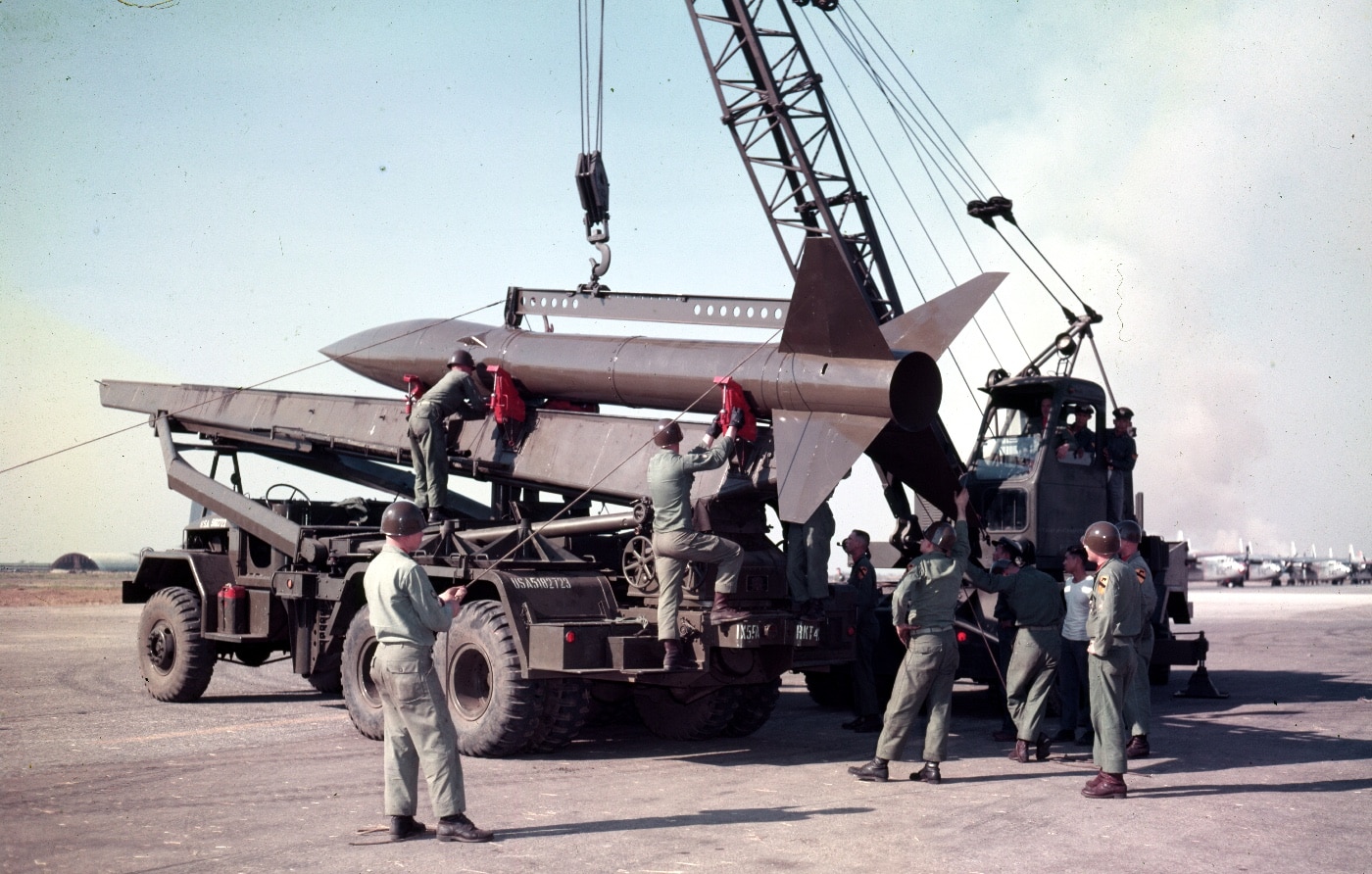
A U.S. Army report of November 1966 detailed the elements, transportability and capabilities of an Honest John battery:
Capabilities and Characteristics of Honest John System
1. General: The Honest John rocket is a free-flight, solid propellant, field artillery rocket. It follows a ballistic trajectory, and stability in flight is achieved using four tail fins. CEP varies with range and at optimum tactical ranges it is 263 meters.
2. Mobility: Launchers available for firing the Honest John Rocket are the M386 (SP), and the M33 (towed). The M33 (towed) is a lightweight launcher (4,400 pounds) designed for air and helicopter transportation.
For surface movement, the M386 (SP) launcher is as mobile as its carrier, a 5-ton truck.
(A) Each Honest John battalion is Phase II air transportable when equipped with the M386 launcher. Phase I air transportability can be achieved by substituting 2 ½ ton trucks for 5-ton trucks and using tripods for rocket assembly and loading.
(B) The helicopter-transportable launcher M33 is a suitable substitute for the M386 in airborne and airmobile operations. When this substitution is made, helicopters or 2 ½ ton trucks may be used for displacements.
(C) Honest John helicopter transportable equipment consists of M33 launcher with associated rocket handling and supporting equipment, including lightweight vehicles
3. Personnel Requirements: The minimum crew requirement to launch an Honest John is 13. Assuming practical minimum crew of 3 for the 105 and 155 howitzers, and 8 for the 8 inch and 175mm weapons, the number of personnel for a time on target comparable in effectiveness to one Honest John would be 444 (105mm), 232 (155mm), 592 (8 inch), and 440 (175mm). The number of personnel required to support the units in moving and communicating would be proportional to the number of firing crew personnel (about 1:1 depending upon operational exigencies). A reasonable approximation would be to double the personnel figures.
Rate of Fire: The rate of fire is one round every 30 minutes. (Note: loading the armed/prepared rocket represented the lion’s share of this timetable. Once loaded on the launcher, the Honest John positioned, aimed, and fired in about five minutes.)
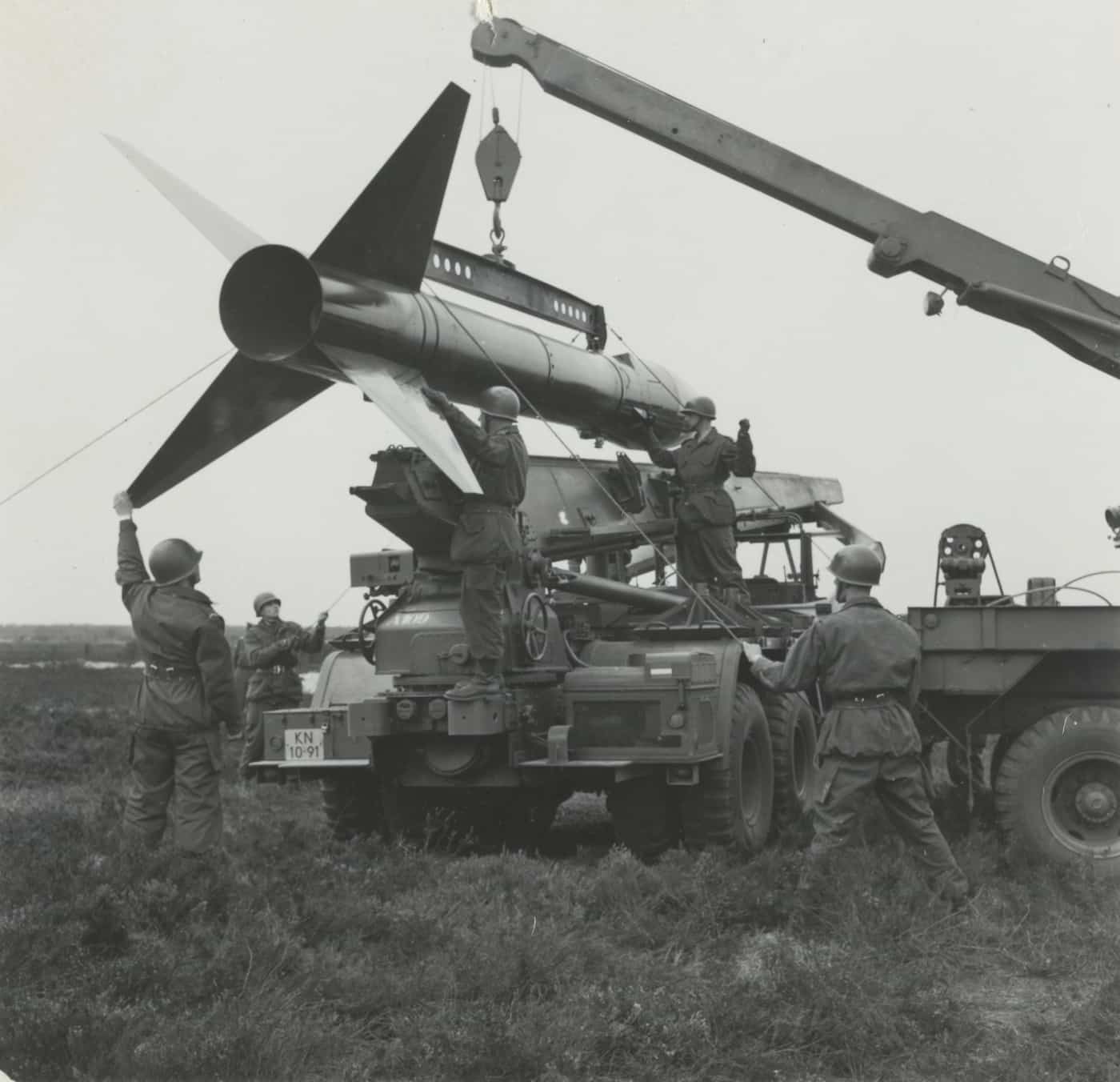
The 5-ton M55 Cargo Truck played a particularly important role in the Honest John system, and was used to transport the rocket in cradles. When moved to the launch site, the rockets were divided into two components, the rocket motor and the warhead.
Care was taken to protect the sensitive rocket propellant from temperature changes. Consequently, the M55 truck mounted a 115-volt generator to power a special “heating blanket” to maintain a stable temperature for the rocket. This was known as the “Heating and Tie Down Unit, 762mm Rocket, Truck-mounted, M78A1”
MGR-1 Deployed to Global, Strategic Hotspots
Honest John was an important nuclear-capable deterrent. Accordingly, it was distributed to areas where a tactical nuclear weapon was considered acceptable, but not politically inflammatory.

A U.S. Army report from November 1966 recorded the status of Honest John M-386 launchers worldwide as:
Korea: 13
Europe: 54
CONUS: 39
The Vietnam Question
Despite its long service, the Honest John was never used in combat. The system was widely known as a nuclear missile, or at least nuclear-capable, and while this had great value in the way of deterrence, it also created unwanted political scrutiny should Honest John be deployed in combat equipped with a conventional warhead.
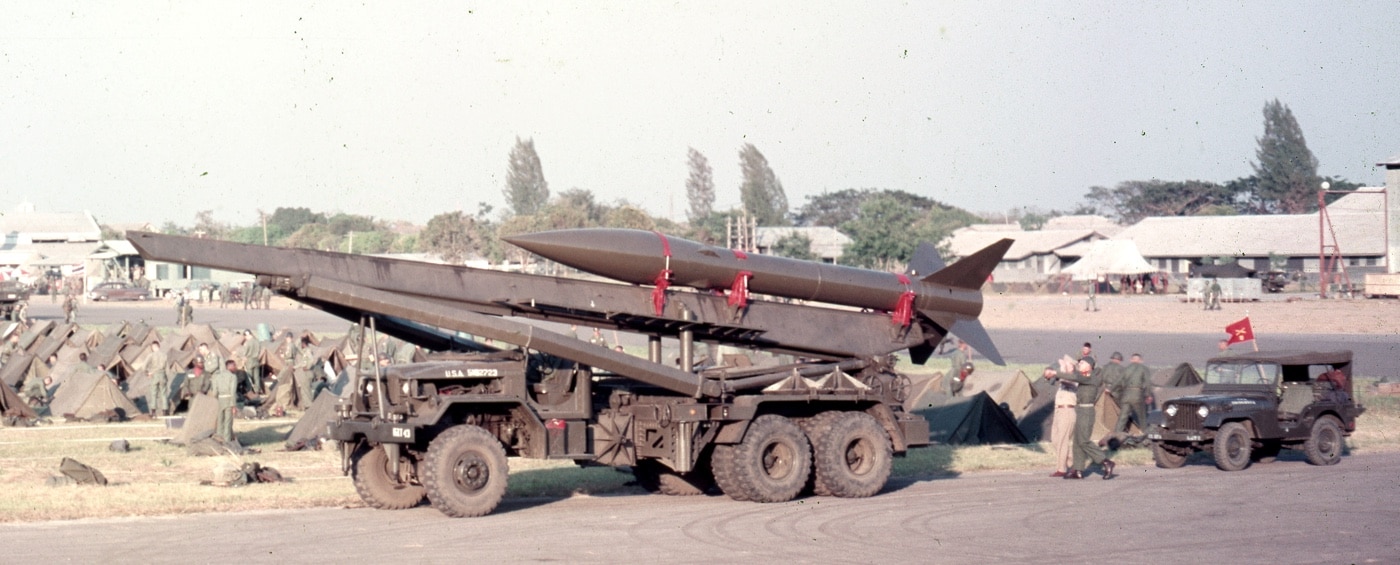
The following report from June 1967, discusses the pros and cons, both technical and political, of the potential use of Honest John in Vietnam:
Employment of the Honest John rocket in Vietnam (June 1967)
TO: Deputy Commanding General, United States Army, Vietnam, APO 96307
CONUS testing of the XM 223 warhead yielded favorable results. A weapons system that is capable of enhancing combat power and is immediately responsive to the ground commander should not be overlooked. The enemy has tended to mass forces in recent actions and our target acquisition means are improving.
HONEST JOHN would not necessarily duplicate an existing system. It would provide augmentation with a system which is characterized by faster reaction time, a greater element of surprise, and invulnerability to enemy ground fire in flight. The XM 223 warhead containing 1,450 BLU-26 bomblets compared to the Air Force bomb (665 BLU-26 bomblets), furnishes a larger lethal radius.
During the past fifteen years, the Army has introduced a variety of missile weapons into the artillery arsenal, with none ever fired in combat. Experience gained from employment of HONEST JOHN in Vietnam, even on a limited scale, would enhance the development of doctrine and techniques for employment of missile artillery in combat.
XM-223 (Ten round test program recently conducted at White Sands Missile Range, New Mexico). c. d. Road nets are not secure in many areas of RVN. The USAF has employed a munition containing BLU-26 grenades in RVN. (Similar to XM-223 warhead). e. The Circular Error Probable {CEP) of the Honest John Missile is 263 meters at optimum tactical range.
The Honest John is commonly referred to as a nuclear system and the introduction of this system to RVN might be exploited by the communists as an indication of escalation of the war or of our intention to use nuclear weapons. Recent news articles have discussed the nuclear capable weapons presently in RVN with no apparent adverse political effects. Another possible impact if Honest John were deployed to RVN is that it would add more weight to the national policy of following the war to a successful conclusion, using all means available short of nuclear war. (2) If Honest John were deployed to RVN, proper preparation by Public Information Agencies could do much towards a favorable reception.
Other factors which militate against testing the system in Vietnam are: (1) The vulnerability of the Honest John system to sniper fire, mortar attacks and other harassing action which VC/NVA forces could employ. (2) The storage and handling problems encountered in Vietnam. It should be easier to find means to prevent overheating of the rocket motors under hot, humid field conditions in Panama than in Vietnam. 2. (s) If the decision is made to proceed with the tests in RVN, it is felt that an adequate test could be conducted without deploying an entire Honest John battalion to RVN. 3. (s) Even should the tests prove the effectiveness of the XM-223 warhead in the jungle, it is felt that opportunities to employ this weapons system against worthwhile targets in III CTZ would be extremely rare. The presence of large VC/NVA forces has in almost all cases been discovered by contact with our own ground forces, a situation which precludes the use of any weapons system with no greater accuracy than that of the Honest John. The kind of targets in III CTZ normally attacked by B-52 strikes, that is, fortified positions, would not be vulnerable to the Honest John.
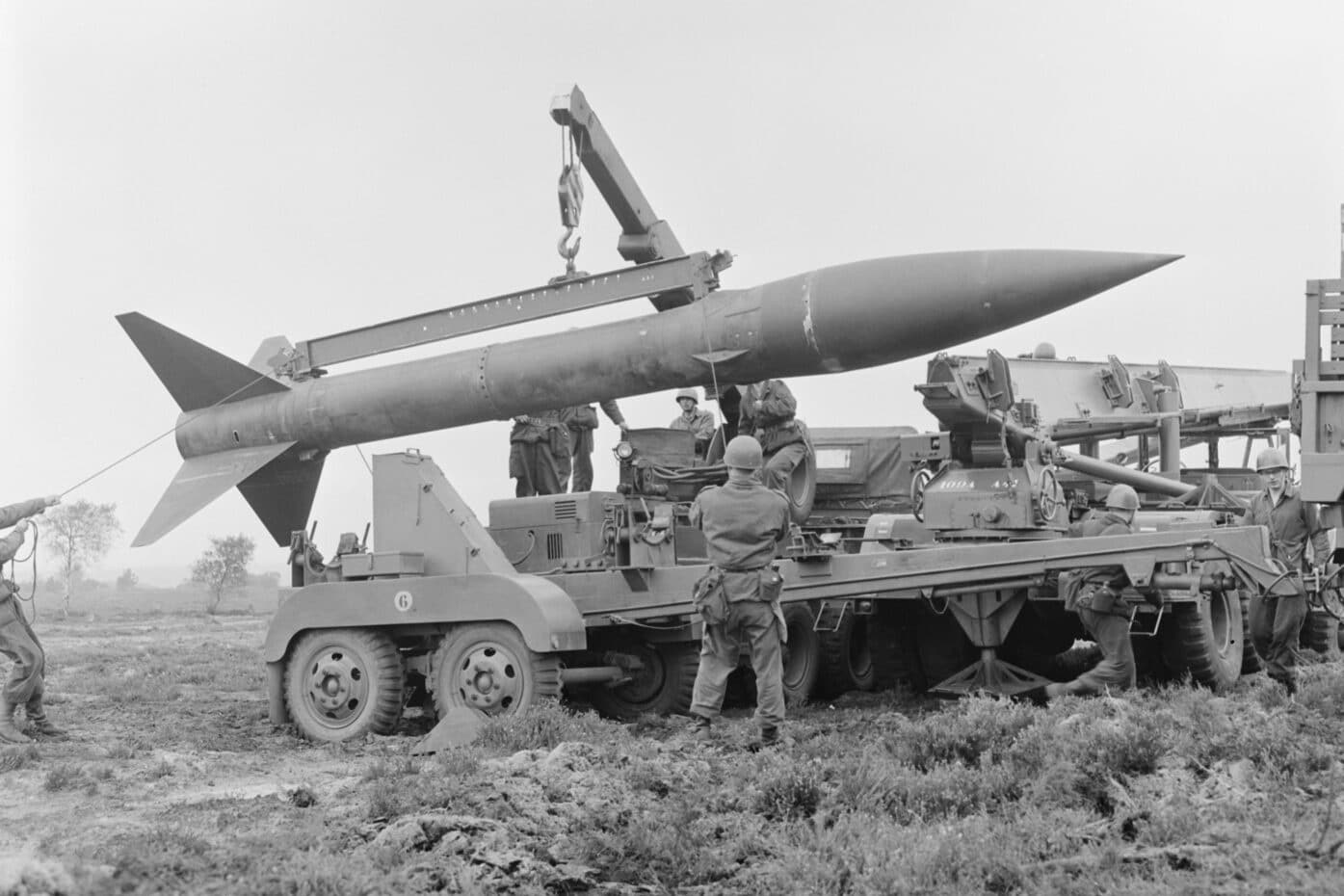
General Westmoreland’s headquarters carefully reviewed the proposal to send Honest John into combat in Vietnam, and this was his reply:
1. This headquarters has reviewed the recommendations and supporting study to deploy the Honest John rocket system with the XM-223 warhead to RVN.
2. While there is some merit in the ability of Honest John to strike deep, large area targets, the weapons systems available in country, and the B-52 aircraft can accomplish this task satisfactorily at the present time.
3. The study shows that the XM-223 warhead, when detonated at optimum burst height, has an area coverage of 119,000 square meters. However, the study also shows that up until March of this year 8070 of all non-divisional artillery fires in I FFORCEV were against targets located in areas only 1/5 this size. The large area coverage of the XM-223 warhead is attractive in that it offsets to a degree the problem of target location and it would also allow suppressive fires to be delivered over a large area. In this regard your views on the use of Honest John in the DMZ is militarily attractive but other considerations, including political, are at least offsetting.
4. As you know, finding the enemy is one of our greatest problems here. The presence of VC/NVA forces in numbers for lucrative artillery attack has in most cases been discovered by our ground forces in close contact. This situation practically rules out the use of the Honest John due to its large dispersion error. When targets are encountered which are best attacked with XM-223 type warhead, the same bomblets, BLU26s can be delivered by tactical air.
5. In view of the ground weapons systems available in-country, tactical air support, and B-52 bomber support, it is concluded that there would not be a significant advantage gained in deploying Honest John to RVN. Further, the problems and cost of introducing the Honest John rocket system for testing of the XM-223 warhead in RVN is not justified under current conditions.
W. C. WESTMORELAND General, United States Army Commanding
A Long-Term Cold War Veteran
Honest John was enduring symbol of American military strength during the Cold War, and other than the Minuteman, it was the longest-serving U.S. ballistic missile. Production of the M31 series totaled nearly 7,800 rockets, while the later M50 series reached almost 7,100. Honest John was replaced in service by the Lance missile, beginning in 1973. Even so, the truck-mounted M50s served in the National Guard until all the components of the Honest John system were declared obsolete on July 9, 1982.
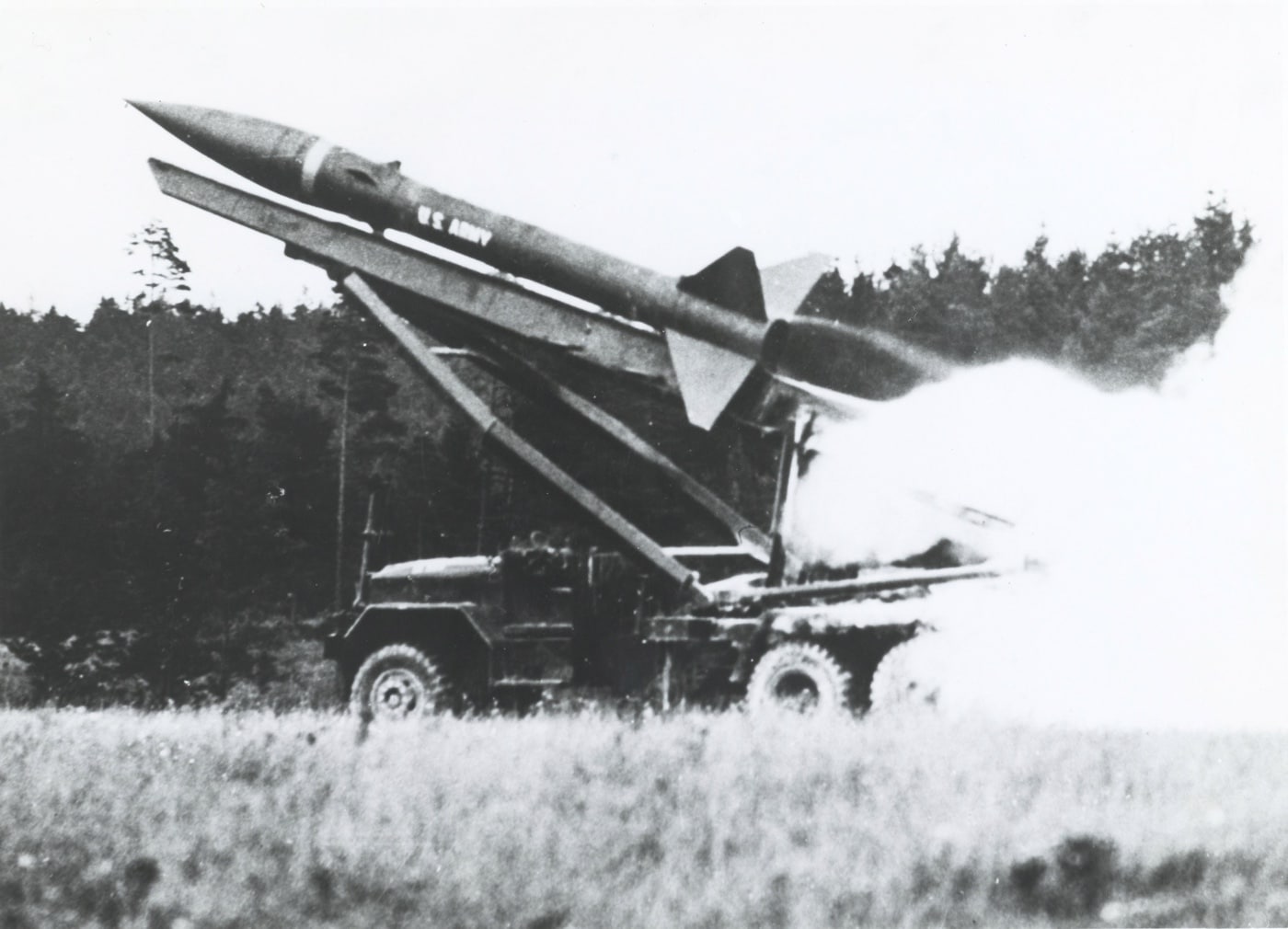
Along the way, Honest John served with the forces of Belgium, Britain, Canada, Denmark, France, West Germany, Greece, Holland, Italy, Norway, South Korea, Taiwan and Turkey. Its mission of peace-through-strength was accomplished without a shot fired in anger.
Named Without Exaggeration
Unguided rockets are notoriously inaccurate, and in the waning days of 1950 the XM31 project was dangerously close to being cancelled due to concerns over accuracy. As the story goes, Colonel Toftoy, in charge of the rocket’s development, met a notorious teller of “tall tales”, who would defend himself when accused of exaggeration by claiming he was known as “Honest John”. Colonel Toftoy felt the moniker fit the situation, and the name, as well as rocket, stuck. And that’s the truth as far as I know.
Editor’s Note: Please be sure to check out The Armory Life Forum, where you can comment about our daily articles, as well as just talk guns and gear. Click the “Go To Forum Thread” link below to jump in!
Join the Discussion
Read the full article here

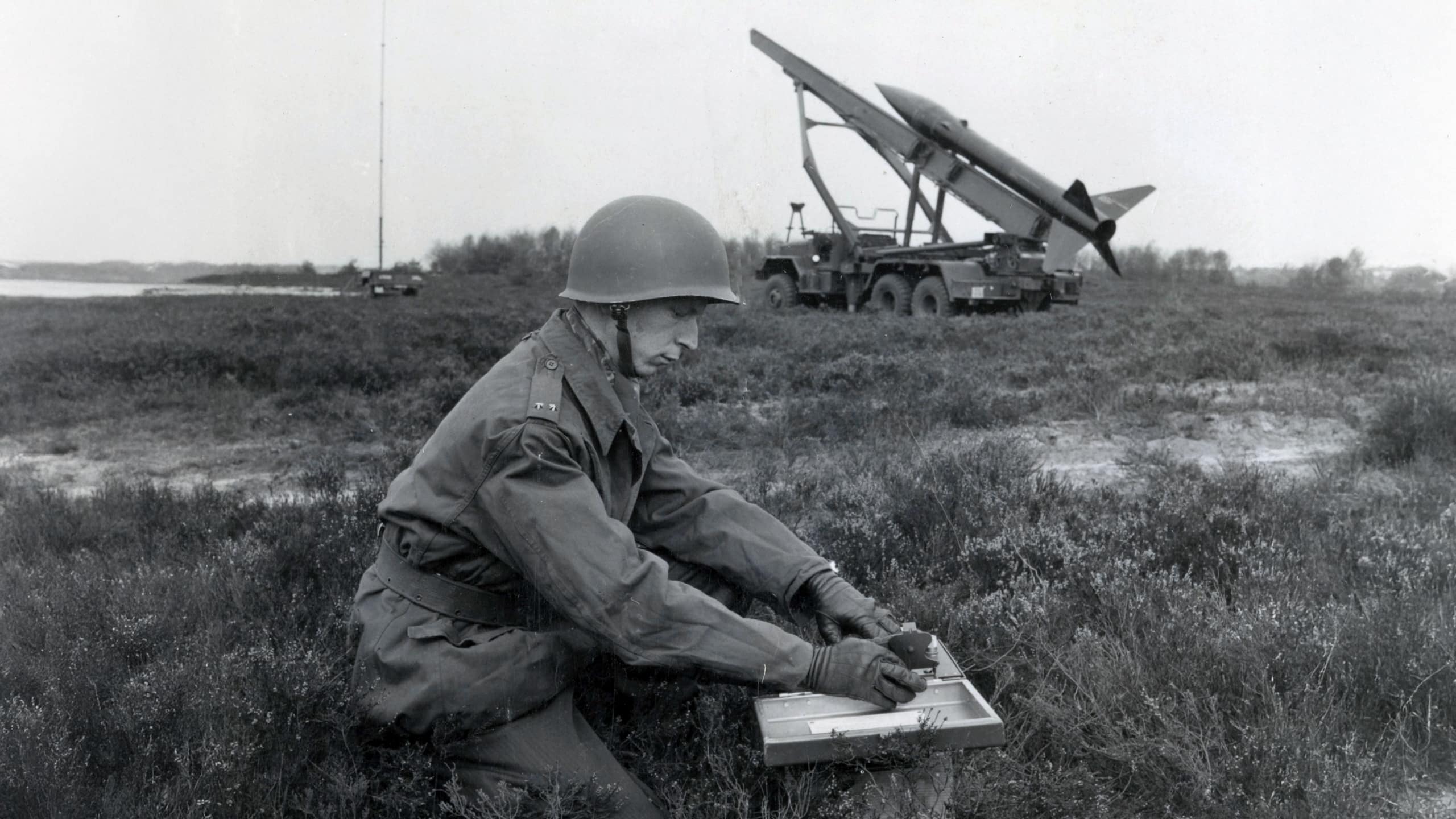
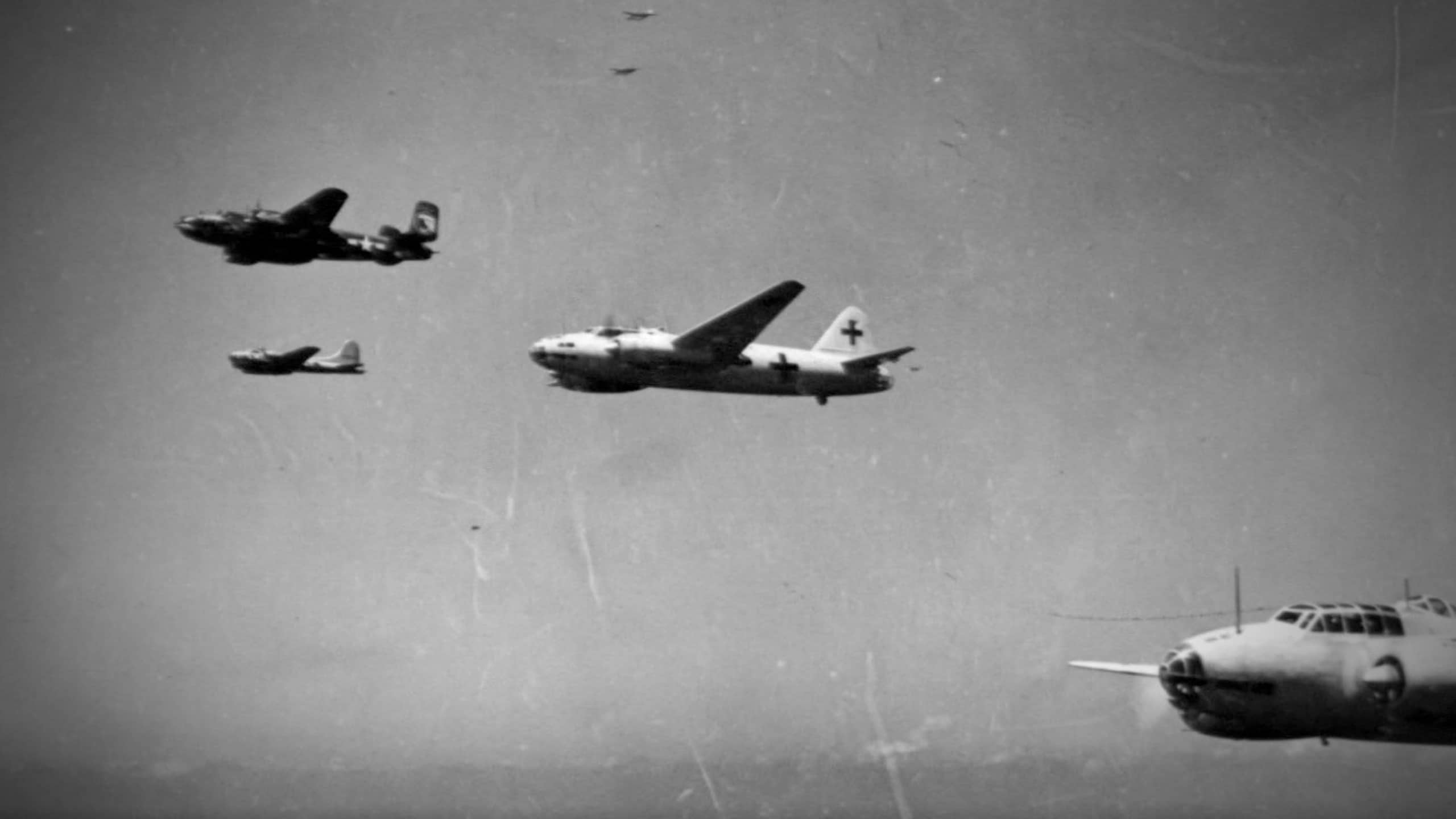




Leave a Reply